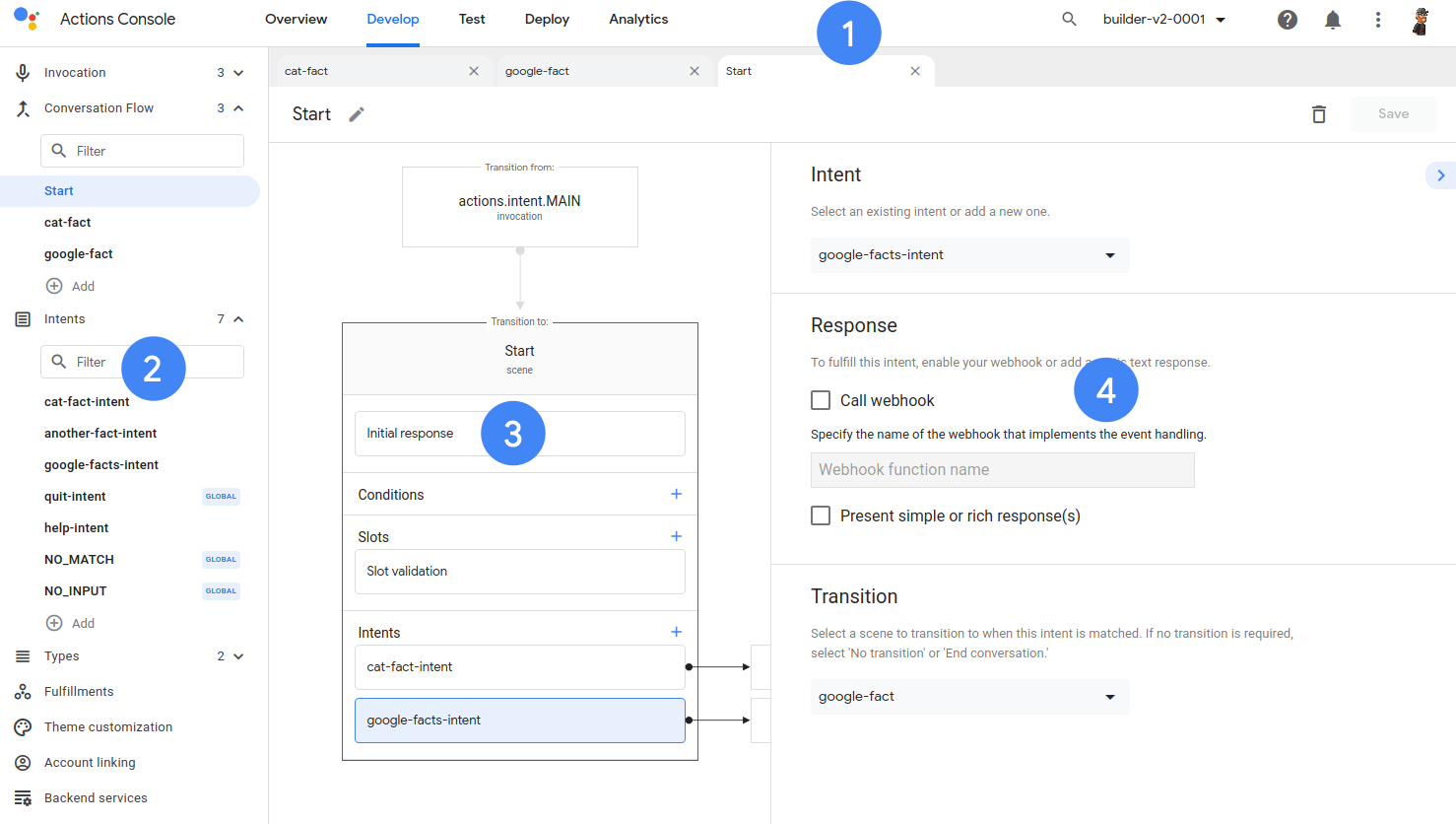如要建構對話動作,請建立及部署下列元件:
- 動作專案 - 所有對話動作、網路服務和網路應用程式的邏輯容器。此外,也會定義專案設定和資源,說明如何將專案部署至 Google 助理。
- 叫用模式 - 定義使用者如何探索及啟動專案中的動作。您可以使用意圖和型別建構叫用模型。
- 對話模型 - 定義使用者可對動作說出的內容,以及動作如何回應使用者。您可以使用意圖、類型、場景和提示,建構對話模型。
- Webhook - 動作可以觸發 webhook,將額外的邏輯委派給你的履行服務,例如產生提示、驗證資料等。
- 互動式畫布 - 你可以提供全螢幕的互動式網頁應用程式,而非傳送簡單的文字回覆或互動式資訊卡和圖片,這類應用程式採用 HTML、CSS 和 JavaScript 技術。
以下各節說明您將用來建構動作的工具。
動作
Actions API 是一組開發人員工具,可讓您為 Google 助理建構動作。包含的功能如下:
以檔案為基礎的開放式 Actions 專案表示法 - 使用意圖、型別、場景和提示,建構叫用和對話模型。你可以使用喜愛的文字編輯器編輯 Actions 專案、將專案簽入原始碼控制項、建構自動化程序等。
指令列介面 (CLI) -
gactions工具提供 CLI,可啟動及自動化開發動作。您可以使用這個工具初始化標準動作專案檔案、將更新推送至 Actions 控制台、部署動作專案等。這項工具可讓您執行許多常見的工作流程,例如匯入現有專案,或使用您偏好的來源控管系統,開始處理功能分支。Actions API - Actions API 與
gactions工具使用的 API 相同。Actions API 提供 REST 端點清單,可管理動作,包括測試和建構。您可以使用 JSON 要求,透過 API 執行多種常見工作流程。使用 Actions API 時,請留意某些限制和最佳做法。Webhook 和 Node.js 執行要求程式庫 - 您的動作可透過 Webhook 和以 JSON 為基礎的訊息格式,將業務邏輯委派給 Web 服務。我們提供 Node.js 執行要求程式庫,為對話 Webhook 提供慣用介面。這個程式庫可讓您輕鬆實作許多常見的使用者流程。舉例來說,部分功能包括從使用者查詢中擷取參數,以及為 Google 助理產生多模態體驗 (僅限語音和語音與視覺)。
動作建構工具
Actions Builder 整合至 Actions 控制台,提供強大易用的網頁式 IDE。Actions Builder 與 Actions API 採用相同的技術,因此您可以視需求單獨使用,或與 Actions API 搭配使用。

Actions Builder 使用者介面可分為下列區域:
- 頂端選單可存取 Actions 控制台的不同區域,您可以在「開發」分頁中存取 Actions Builder。
- 左側選單可讓您存取所有用來建構動作的元件,例如意圖和場景。
- 您可以在建構區域中建構正在處理的元件。
- 您可以在詳細資料區域中,設定正在處理的元件詳細資料。

